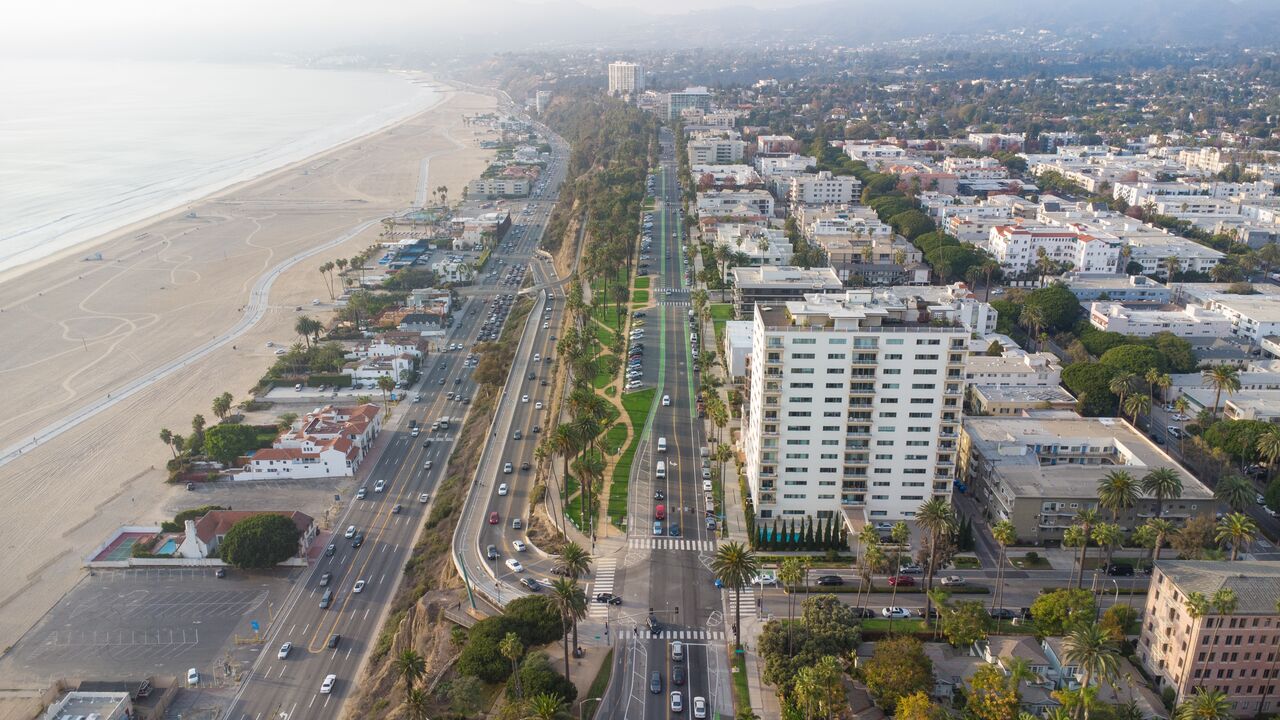
California’s ambitious housing mandates were supposed to solve the affordability crisis. Instead, they’re creating a vicious cycle that’s killing public transit and pushing working families further from opportunity. New UCLA research reveals a stunning pattern: every $230 increase in monthly rent predicts a 22% drop in bus and train ridership. This isn’t coincidence—it’s displacement economics in action.
California’s RHNA housing production targets pressure cities to approve development wherever they can. But it’s not just large-scale apartment buildings—state lot-split laws like SB 9 are quietly transforming single-family neighborhoods within half a mile of transit stops.
These laws allow property owners to divide single-family lots into multiple parcels, creating duplexes and small multi-family buildings in previously single-family zones. Marketed as “gentle density,” the reality is more complex: these new units command market rates (there are no affordability requirements for small splits) that attract affluent residents who often drive rather than use nearby transit.
It is a cruel irony that State mandates designed to create affordability are instead creating a transit accessibility crisis at multiple scales. When developers build near train stations without affordability requirements—whether large apartments or subdivided lots—they’re reconstructing neighborhoods. Lower-income families who depend on buses and trains get pushed to car-dependent suburbs, while affluent newcomers drive to work from their transit-adjacent homes.
As ridership declines, transit agencies face cascading problems that create their own death spiral:
Reduced Revenue and Service Cuts: Lower ridership means less fare revenue, forcing agencies to cut service frequency and routes. Metro’s recent service reductions exemplify this vicious cycle—fewer buses and trains mean longer waits, driving away even more riders.
Security and Safety Deterioration: Emptier trains and platforms create environments where crime and antisocial behavior flourish. Well-documented safety issues on Metro lines have made transit systems unwelcoming to families. When middle-class riders abandon transit due to safety concerns, the remaining ridership becomes increasingly concentrated among those with no alternatives, creating a perception of transit as social service rather than transportation infrastructure.
Political Support Erosion: As ridership demographics shift and affluent communities increasingly see transit as “not for them,” political support for transit funding wanes. Voters who drive to work from their transit-adjacent homes are less likely to support bond measures for system improvements.
Deferred Maintenance: Reduced ridership and political support lead to deferred maintenance and cancelled expansion projects. Aging infrastructure becomes less reliable, further deterring potential riders.
Cities face perverse incentives in this system. Santa Monica teeters on bankruptcy despite being surrounded by wealth, desperately needing more taxable residential properties to shore up finances. Cities can’t afford to say no to market-rate development, even when it undermines their transit systems and community character.
This creates a destructive feedback loop: financial desperation drives cities to approve exactly the kind of development that destroys their transit ridership base. Cities become addicted to tax revenue from high-end housing, even as that housing pushes out working families who actually use public transportation. State housing mandates exploit this municipal vulnerability, forcing financially strapped cities to choose between fiscal survival and preserving transit-dependent communities.
Sacramento Democrats are trapped between two visions:
Team Build-More: Led by Senator Scott Wiener, argues that increasing housing supply—even market-rate—will eventually ease pressure on everyone.
Team Affordable-First: Warns that building without affordability requirements accelerates displacement of people who need transit most.
Wiener’s SB 79 would supercharge development around transit stops, including on transit agency land. But critics see it as “gentrification by legislative mandate”—using state power to transform neighborhoods without protecting existing residents.
This isn’t just about housing or transit—it’s about environmental justice and California’s climate goals. When displaced transit riders are forced into car-dependent suburbs, environmental impacts multiply:
- Former transit users now driving from distant suburbs create more traffic, emissions, and infrastructure strain. Each displaced family might add 20,000+ vehicle miles annually.
- Working families pushed to Riverside, San Bernardino, and Central Valley communities increase development pressure in previously undeveloped areas, destroying habitat and agricultural land.
- California cannot meet aggressive climate targets while pursuing housing policies that increase car dependency.
The suburbanization of poverty isn’t a natural market force—it’s a policy choice. Every time California prioritizes housing production over housing affordability near transit, it chooses to push working families away from jobs, services, and mobility options.
The solution isn’t abandoning housing production—California desperately needs more homes. But mandating quantity while hoping for affordability isn’t working. Real reform requires:
Affordability by Design: State mandates that tie development rights to affordability requirements. No transit-adjacent development should proceed without guaranteeing units for existing community income levels.
Anti-Displacement Protection: Policies helping existing residents stay as neighborhoods improve, including community land trusts, tenant protections, and local hiring requirements for new developments.
Transit-First Development: Housing policies that prioritize keeping transit riders near transit, with dedicated funding for affordable housing within transit corridors.
Transit Security and Service Investment: Addressing safety concerns through improved lighting, security presence, and social services while maintaining frequent, reliable service that attracts choice riders.
Regional Coordination: Aligning housing, transportation, and economic development policies across regions to prevent geographic sorting that undermines both equity and efficiency.
California spends billions on transit systems while inadvertently destroying their ridership base through housing policy. It’s uniquely Californian governmental self-sabotage: solving one crisis by creating another.
Every transit-adjacent apartment that displaces a bus rider is a small defeat for both affordability and sustainability. Every working family pushed to a car-dependent suburb represents integrated planning failure. Every empty train car during rush hour is evidence that California’s approach isn’t working.
The bottom line is that California’s housing mandates aren’t just failing to create affordability—they’re actively destroying transit systems that make car-free living possible. From lot splits in single-family neighborhoods to luxury apartments on transit agency land, state policy systematically replaces transit riders with car drivers. Meanwhile, financially desperate cities like Santa Monica become unwilling accomplices, approving development they know will undermine their communities because they need tax revenue to survive.
The resulting transit death spiral—declining ridership leading to service cuts, safety problems, and political abandonment—threatens decades of investment in sustainable transportation infrastructure. Until Sacramento aligns its housing, transportation, and municipal finance policies, this expensive, environmentally destructive spiral will continue—with each new market-rate unit near transit representing another small victory for cars over trains.
Jack Hillbrand, AIA, Landmarks Commission Architect
Santa Monica Architects for a Responsible Tomorrow
Samuel Tolkin, Architect & Planning Commissioner; Thane Roberts, Architect; Mario Fonda-Bonardi AIA, Architect (ex-Planning Commissioner); Robert H. Taylor AIA, Architect; Dan Jansenson, Architect & Building and Fire-Life Safety Commission; Michael Jolly, AIRCRE; Jack Hillbrand, AIA, Architect, Landmarks Commissioner; Matt Hoefler NCARB, Architect; Phil Brock, SM Mayor (ret)
For previous articles, see www.santamonicaarch.wordpress.com/writing












